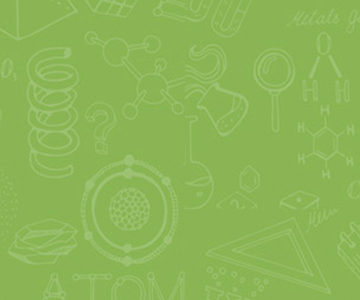In our latest blog series - 'Year Overview' - we help you get familiar with all the key topics your child will learn and the key skills they'll improve in primary and secondary school. Here's a brief overview of Year 6 in English, maths and science with focus areas and main topics.
* Year 6 Overview *
English - Year 5 and 6
Ms Brown - English teacher
 During Years 5 and 6 the children will become fluent, accurate and confident readers. They'll be able to compare different books, learn poetry by heart, and prepare and perform readings of various texts aloud. Through their growing reading skills they'll be able to discuss and evaluate how a writer uses language, distinguish fact from opinion and participate in group discussions about texts.
During Years 5 and 6 the children will become fluent, accurate and confident readers. They'll be able to compare different books, learn poetry by heart, and prepare and perform readings of various texts aloud. Through their growing reading skills they'll be able to discuss and evaluate how a writer uses language, distinguish fact from opinion and participate in group discussions about texts.
The children’s spelling will continue to develop and they'll be growing more confident in using a dictionary as well as beginning to use a thesaurus to develop their vocabulary. Their handwriting will now be legible, fluent and they'll write with speed. Their written work will be thoroughly planned and they'll become expert drafters; they'll carefully select their vocabulary choices, describe settings, characters and atmosphere and be able to link their paragraphs to give their writing cohesion. The children will also learn how to use different organisational and presentational devices such as headings, bullet points and subheadings. After completing a draft of writing the children will become used to evaluating and editing what they have done. Their use of grammar will grow in sophistication and they'll be using punctuation such as semi-colons.
At the end of Year 6 the children will sit national tests in reading and spelling punctuation and grammar while their writing will be assessed by the teachers. These results will assess whether they are at the desired level for Year 7 and will be used by the secondary schools to ensure the children are set appropriate targets.
Maths
Mr Lamberth - Maths teacher
 By now, children’s grasp of place value, including decimals, should be totally secure. They need to see negative numbers in context and be able to do calculations that go across zero. They are also expected to use estimation and rounding to check the accuracy of any answer. Building on previous years’ work, they should be tackling increasingly complex mental calculations using common factors and multiples to support them. BIDMAS – the order of operations - is introduced in Year 6 and children need to apply this to their work. There is a significant step forward here in deciding what to do instead of just doing it. This may be in terms of which of the 4 operators to use in order to complete any worded problem, how and when to apply the formula for finding the area of a triangle or when to convert from miles to kilometres. There is increased emphasis on applying your knowledge and understanding to solve problems, e.g. equivalent fractions to add fractions with different denominators, ratios to make scales drawings and algebra to solve missing number problems. Children enjoy making and manipulating the nets of 3D shapes and will learn to calculate the (mean) average of data they encounter.
By now, children’s grasp of place value, including decimals, should be totally secure. They need to see negative numbers in context and be able to do calculations that go across zero. They are also expected to use estimation and rounding to check the accuracy of any answer. Building on previous years’ work, they should be tackling increasingly complex mental calculations using common factors and multiples to support them. BIDMAS – the order of operations - is introduced in Year 6 and children need to apply this to their work. There is a significant step forward here in deciding what to do instead of just doing it. This may be in terms of which of the 4 operators to use in order to complete any worded problem, how and when to apply the formula for finding the area of a triangle or when to convert from miles to kilometres. There is increased emphasis on applying your knowledge and understanding to solve problems, e.g. equivalent fractions to add fractions with different denominators, ratios to make scales drawings and algebra to solve missing number problems. Children enjoy making and manipulating the nets of 3D shapes and will learn to calculate the (mean) average of data they encounter.
Have you tried our Maths Assessment yet? Join EdPlace’s Maths Challenge: work through the questions, complete the recommended online worksheets and earn badges! Have fun!
Science
Ms Latham - Science teacher
This year children will begin to recognise that scientific ideas change and develop over time. They should select the most appropriate ways to answer questions using different types of scientific enquiry, including observation, patterns, grouping and classifying, comparative and fair tests and using secondary sources of information. Children should draw conclusions based on their data and observations using evidence. During the ‘living things’ topics this year children will identify how animals and plants are adapted to suit their environment and link adaptation to evolution.
 They’ll classify micro-organisms, plants and animals and recognise that fossils inform us of the past and that offspring differ from their parents. Children will study the human circulatory system, describing the functions of the heart, blood vessels and blood and recognise the impact of diet, exercise, drugs and lifestyle.
They’ll classify micro-organisms, plants and animals and recognise that fossils inform us of the past and that offspring differ from their parents. Children will study the human circulatory system, describing the functions of the heart, blood vessels and blood and recognise the impact of diet, exercise, drugs and lifestyle.
In ‘light’ children will recognise that light travels in straight lines and explain how shadows work. They’ll be taught that objects are seen because they give out or reflect light into the eye. In ‘electricity’ children will use recognised symbols when drawing a simple circuit and compare and reason how components in a circuit function, estimating the voltage of battery cells used to vary the brightness of bulbs, the loudness of buzzers and the on/off position of switches.







